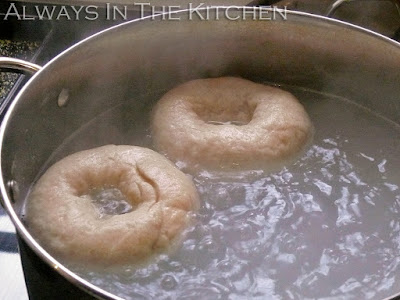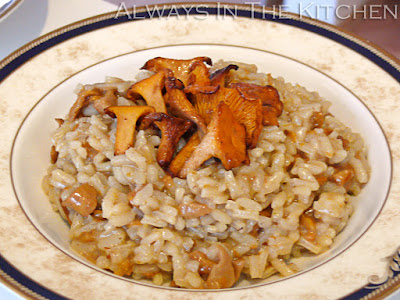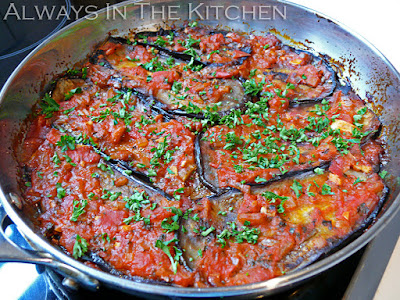
Much like the recipes for Kalte Schnauze and shortbread, this was one of the required Christmas baking items of my childhood. They are a quintessential Canadian treat named after the city of Nanaimo ("Nan-EYE-mo") on Vancouver Island, and these days are available year round in bakeries across Canada (sometimes in disconcertingly large serving sizes). You can get them with non-traditional flavours added to the filling - orange or mint or caramel, for example - but I've always preferred the standard version.
For the pan, I always use my 7x11" Pyrex glass baking dish, but I note that the original recipe called for a 9x9" pan, so either would do. Of course, the area of a 7x11" pan is 4 inches smaller, so the bars will be a tiny bit thicker. We always used a 7x11" pan, and I don't think I ever noticed that it was technically the wrong pan size.
Did I mention that these are no-bake? You do need a stove top, but not an oven.
Nanaimo Bars
Makes a 7x11" pan
Prepare your pan. For easy removal, a strip of parchment paper works well. Grease the sides with a thin skim of butter.
Base layer
1/2 cup butter
1/4 cup sugar
5 tablespoons cocoa powder
1 teaspoon vanilla
1 egg, beaten
1 1/2 cups graham wafer crumbs*
1 cup unsweetened, dried shredded coconut
1/2 cup chopped walnuts
Put the butter, sugar, cocoa powder, vanilla, and beaten egg in a bowl (or the top of a double-boiler), and set the bowl over hot water, stirring until the butter has melted and the mixture resembles a thick custard. If your butter is very cold, chop it into small bits to facilitate the process.
Remove from the heat, and add the crumbs, coconut, and walnuts. Stir rapidly and thoroughly (I find a fork is the best tool here), to incorporate all of these dry additions into the mixture, until it becomes a damp, crumbly mixture without any dry spots. Turn it out into your prepared pan, spread it evenly across the bottom, and then pack it down tightly with your hand (as evenly as possible). Don't be afraid to press firmly - that will help it hold together later, when you're slicing it. Set aside, and make the filling.
Filling layer
1/4 cup butter, softened
2 cups (500 grams) icing sugar
2 tablespoons custard powder (We always used Bird's Custard Powder)
3 tablespoons whole milk
Put all of the filling ingredients in a medium mixing bowl, and mix until smooth. A hand mixer is really the easiest tool for this, and if your icing sugar is really old and clumpy, you might want to sift it first, for best results.
The result should be a thick, stiff butter icing, slightly yellow from the custard powder. Dollop the icing onto the chocolatey base, and spread and smooth it until it evenly covers the base layer.
Let the filling harden for at least 15 minutes at normal room temperature, 30 minutes is better (gives you time to clean a few dishes, or make a whole different recipe).
Top layer
200 grams dark/bittersweet chocolate (75%)
1 3/4 tablespoons butter
Melt the chocolate and the butter together, stirring until smooth. You can use the double boiler, a pan directly on the stove over low heat, or the microwave, however you prefer to melt chocolate. Just don't burn it. I just use a small pan directly on the stove.
When the butter and chocolate is melted and smoothly combined, pour it evenly over the surface of the filling layer, using a spoon or a spatula to spread the chocolate quickly and evenly over the whole surface, before it begins to set. I always pour the chocolate so that it falls onto the spoon, held right above the filling layer, so it sort of floods over the edges of the spoon and doesn't hit the filling from a height. That's possibly an unnecessary precaution, but that's my method.
Now the difficult part: The whole thing needs to set, preferably at cool room temperature (pantry, root cellar, that sort of thing) before you can slice and serve. Once it has cooled completely to room temperature, we normally slip a plastic bag over it to keep dust etc. off, and put it aside at least overnight. Far better if you can bring yourself to wait an extra day or two (my mother would try to hide it in the pantry for a couple of weeks when we were small). We've never kept it in the fridge -- it usually disappears far too fast to worry about it getting stale anyway.
When you're ready to serve it, run a sharp knife along the un-papered edges, and then lift the parchment ends straight up to lift the whole thing out at once. Transfer to a cutting board, paper and all, and slice as you wish. I find that quite tiny squares, the size of large truffles, are perfect, although as a child I always wanted much more than that. You can also leave them in the pan, and just slice and lift squares as you go, but I'd usually rather free up the pan.

Below is our family's original recipe, in my mother's handwriting. You will note a couple of differences - mostly in the somewhat expanded directions, and a thicker layer of chocolate for the top layer (which makes it easier to spread evenly over the surface). Of course, you could make it the more frugal way with only 4 ounces/114 grams chocolate and one tablespoon of butter, but that does result in a very thin layer of chocolate on the top. I note that the adjustment from 2 cups to 1 1/2 cups of graham cracker crumbs was my mother's correction to prevent the base layer from being too dry and crumbly.

*Living in Germany, it was a challenge to find an appropriate substitute for graham crackers - crumbs or otherwise. I eventually settled on Leibniz Vollkorn Kekse, and used my chef's knife to finely crumble them. It turned out really well, and I would use that substitution again.































